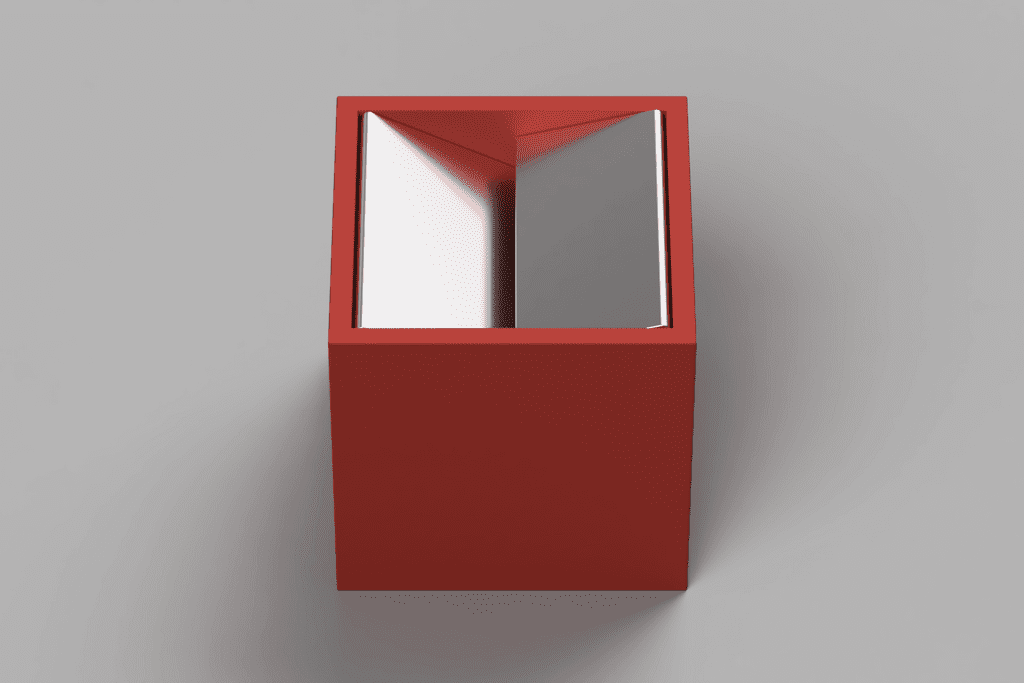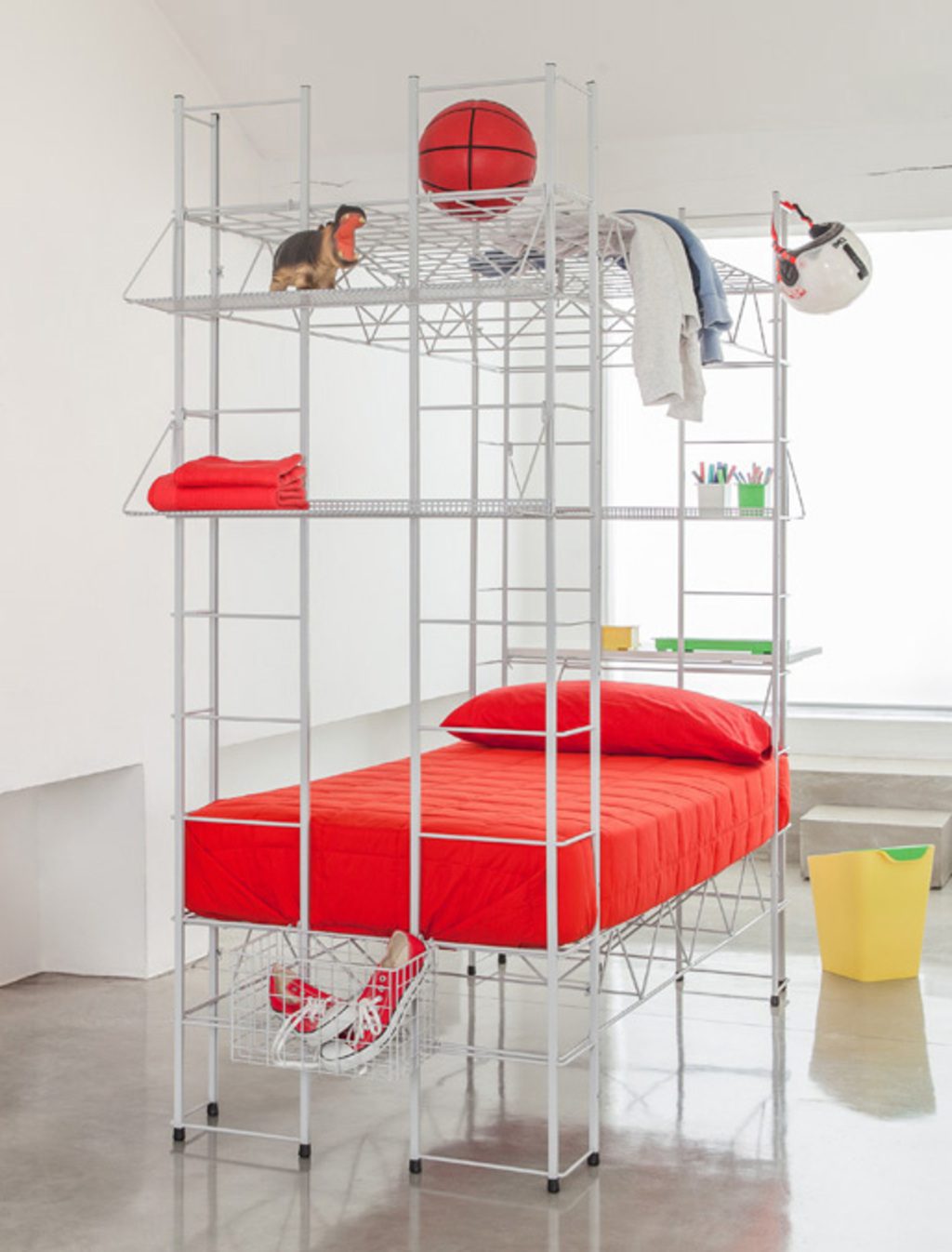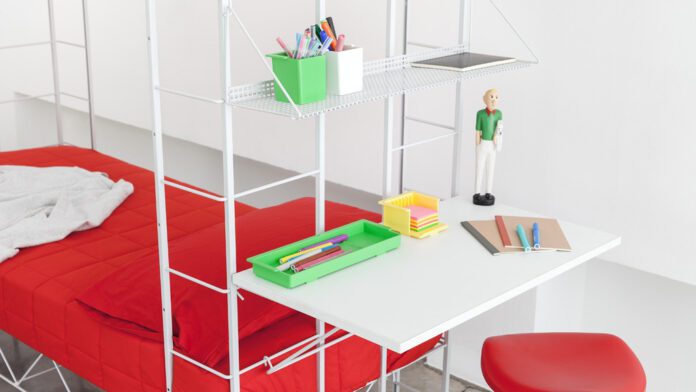The Munari Cockpit: a futuristic design
TheAbitacolo Munari is a futuristic design work created by Bruno Munari. An intersection of art, living space and human interaction, theAbitacolo Munari challenges the traditional boundaries of design and invites reflection on the relationship between the individual and the environment.
An iconic creation, this project represents a unique synthesis of aesthetics, functionality and conceptuality.
Initially produced by Robots and later acquired by Rexite in 2013, theAbitacolo is presented as a modular bed. Created in 1971 with the aim of giving children and young people a customisable and functional space in their parents’ homes, the project thus sought to respond to the needs and social dynamics that emerged in those years.
Constant in Munari ‘s work is the reflection on the importance of design in shaping the surrounding environment and transforming the everyday experience.
Context and Inspiration
Bruno Munari (Milan, 1907 – 1998), internationally recognised as one of the leading innovators in the field of design, developed theAbitacolo in a context of unprecedented creative fervour.
At the end of the 1960s the design world was in turmoil: conceptual art, the modernist movement and the neo-avant-gardes were profoundly influencing creativity. Munari was immersed in this stimulating culture and, as a pioneer of Italian design, he wanted to experiment with new forms of expression.

Munari’s inspiration for theAbitacolo came from multiple sources. He explored the possibilities of creating a work that responded to society’s new demands. His intention was to break the traditional conceptions of living space and offer a new experience to individuals.
Munari drew inspiration from thekinetic art movement, with its emphasis on movement and active participation of the viewer. He wanted theAbitacolo to be a dynamic and interactive work, involving the occupants in the surrounding space.
Furthermore, Munari was inspired by the philosophy of democratic design, which aimed to make design accessible to everyone. TheAbitacolo was to be a flexible and adaptable solution, capable of responding to the needs of different contexts and lifestyles.
Finally, Munari sought to break down the barriers between art and design, exploring the intersection between the two disciplines. He wanted theAbitacolo to be considered a functional work of art that could transform the domestic environment into an aesthetically stimulating space.

Design and functionality
Munari said of his Abitacolo: ‘it is the minimum but gives the maximum’.
Apparently a simple children’s bed, it is actually a concentrate of pure design. Designed for a child aged eight and up, it was to include all the basic amenities, namely a bed, a bookcase, a small table and various storage units. It was to be customisable, transformable as needed and visually uncluttered. The various modular elements could also be repositioned and serve as a ladder to reach the upper floor.
Measuring 194 x 83 x 206 cm, the structure consists of a 20 x 20 cm base module and various sub-modules (10 x 10 cm for the two horizontal tops and 5 x 5 cm for the containers).
The metal structure, shiny and monochrome, is designed to make the various objects that make up the space stand out: its simplicity is intended to stimulate the creativity and interaction of those who inhabit it.

Materials and technologies used
The AbitacoloMunari is distinguished not only by its innovative design, but also by itsfunctional use of materials.
For the supporting structure of theAbitacolo, Munari used light and strong materials. Simple steel rods joined together by electric welding and painted with a glossy whiteepoxy powder. These materials allow greater flexibility in the design and guarantee a longer life span. The choice of lightweight materials was also key to making theCockpit easily transportable and adaptable to different situations. Weighing only 51 kg, it has enough structure to support the weight of twenty people.
Through the choice of materials, Munari demonstrated his attention to thebalance between form and function, trying to create a harmonious environment that offers a unique living experience.
Influence and Legacy
Munari’s Abitacolo has had a lasting impact on the field of experimental architecture and the living environment. Its concept of open and flexible space, its focus on light and the use of functional materials have inspired numerous architects over the years. The Habitacle has opened up new perspectives on the possibilities of transforming living spaces and helped to challenge traditional design conventions.
In addition to direct influences, the Abitacle Munari left an imprint on the field of design through his pioneering vision and multidisciplinary approach. Munari demonstrated that design is not limited to aesthetics, but can integrate art, technology and functionality into a single work. This holistic approach to design has inspired numerous designers to think and create works that go beyond their practical function.
Fiammetta Cantini @Stiledesign. Reproduction reserved
You might also be interested in:










